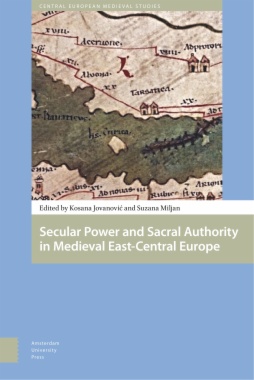This book brings together a team of scholars representing a broad range of interests and new approaches in medieval studies to explore the interactions of secular power and sacral authority in central and southeastern Europe in the period. Contributors present new research on the region's political and legal history, nobility and government institutions, war and diplomacy, literature and literacy, sacred and secular art, archaeological research, heritage studies, and much more.
- Cover
- Table of Contents
- Acknowledgements
- Foreword
- Kosana Jovanović and Suzana Miljan
- Folklore of the Medieval Kings of Hungary
- Preliminary Research Report
- Variations on Nobility in Central and South-Eastern Europe
- An Introduction
- Katalin Szende and Ivan Jurković
- The Changes of Office of Ban of Slavonia after the Mongol Invasion in Hungary (1242-1267)
- The Reconstruction and Role of Roads in the Formation of a Medieval Cultural Landscape
- The Example of Episcopal Estates of Dubrava, Ivanić and Čazma
- From Castle-Warrior to Nobleman
- Case Study of a Family of Slavonian Lesser Nobility
- Late Medieval Village in Turopolje (Slavonia)
- The Example of Donja Lomnica
- Economic Development and Transformation of the Pauline Monasteries near Senj under the Frankapan Patronage
- The Society of the Noble Judges in Northeastern Hungary during the Reign of King Sigismund (1387-1437)
- Development of Ragusan Diplomatic Service in the First Half of the Fifteenth Century
- Father and Son at the Court of Duke Sandalj Hranić
- Croatian Students at the University of Prague in the Fifteenth Century
- A Contribution to Medieval Croatian Diplomatics
- Cyrillic Charters of Croatian Nobility from the Franciscan Monastery on Trsat in Rijeka
- Peter of Crkvica, a Man Who Could Be Trusted
- The Career of a Middle-Ranking Cleric and Diplomat in the Kingdom of Hungary in Mid-Fifteenth Century
- The Nobility of the Despotate of Serbia between Ottoman Empire and Hungary (1457-1459)
- List of Contributors
- Index
- List of Figures and Tables
- Figure 1 Map of Episcopal estates of Dubrava (1), Ivanić (2) and Čazma (3). Situation in the second half of the 13th century
- Figure 2 Map of ancient road directions
- Figure 3 Map of medieval road directions
- Figure 4 Map of ancient and medieval road directions
- Figure 1 Genealogy of descendants of comes Pezk (the people who were granted nobility are in bold)
- Figure 1 Position of the site Šepkovčica and toponmys Jarčenica and Dvorno mjesto within the boundaries of Donja Lomnica
- Figure 2 Plan of the archaeological site Šepkovčica
- Figure 3 Well, pits and ditch
- Table 1 Comparison of the Benedict’s and Marin’s embassy to Duke Sandalj Hranić Kosača of Bosnia
- Table 2 Letters to Benedict de Gondula and his answers
- Figure 1 Example of late Cyrillic majuscule: charter of Count John Nelipčić from 1434 (Samostanski arhiv Trsat, Miscellanea II)
- Table 2 External and philological characteristics of the Cyrillic Croatian documents in the Archive of the Franciscan monastery on Trsat
- Table 3 Internal characteristics (formal structure) of the Cyrillic Croatian documents in the Archive of the Franciscan monastery on Trsat

